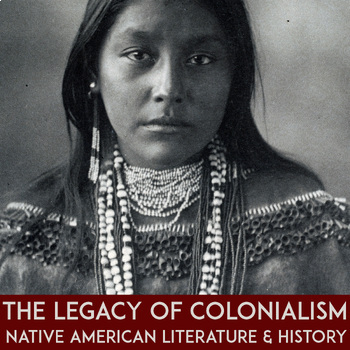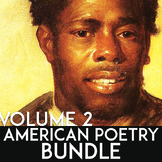Native American Literature & History Boarding Schools, Trail of Tears, Dakota 38
- Zip
Products in this Bundle (3)
Bonus
Also included in
- Tired of students telling you that poetry isn’t relevant to their lives? You can’t really be surprised they act this way when they’ve been lead to believe that reading poetry means trying to figure out some inane, obscure puzzle. And when they’ve only experienced poetry written by old white men whoPrice $12.97Original Price $22.82Save $9.85
- Want to immerse your students in the diversity of this country by studying engaging poetry together? Your students will learn so much when they explore the essential questions of American Literature with these ready-to-go lessons.A collection of questions on 24 poems, from the mid 20th century to tPrice $19.97Original Price $45.60Save $25.63
Description
Ready to integrate more Native voices into your curriculum this year?
While trickster tales, creation myths, and other traditional stories definitely have their place in an American literature curriculum, it’s important that your students don’t get the message that Indigenous literature is only something from the past or something to read about in their history books.
In fact, if you’re not intentionally integrating current writers in your plans, you might be inadvertently giving your classes the message that Native culture is dead and gone.
If you want your students to fully appreciate Native American Literature, and the diversity that makes America great, you need a rigorous, well-researched unit that acknowledges and explores our shared past while celebrating contemporary writers who are living and working today.
In this powerful three-week unit, students will explore three topics from Native American history through the lens of literature: the Trail of Tears, the Dakota 38, and Indian Boarding Schools. For each topic, I have paired a contemporary poem with informational stories on the topic. In order to engage different learning styles and keep students interested, the historical information all comes from compelling radio stories or newspaper articles.
The variety of materials, real-life connections, and innovative approaches to the information will keep students engaged and excited about learning. Additionally, the concrete text-based questions and unique sources discourage cheating and encourage students to answer for themselves.
Tackling big questions around the legacy of colonialism and different forms of resistance and rebellion, this unit will not offer easy answers or oversimplified explanations. Instead, it will get your classes thinking deep, reading and analyzing great literature, and enjoying amazing works of art together.
***All proceeds from this unit will be donated to the Lakota People's Law Project***
When you teach this innovative unit on the legacy of colonialism, you will:
- Begin each class period with engaging freewrite prompts designed to get your classes calm, focused, and thinking about the essential questions of the unit.
- Empower your students to engage with the texts independently when they utilize the rigorous but accessible handouts.
- Diversify your plans to meet your students’ needs when you follow the suggestions included in the units.
- Read three powerful poems by contemporary writers: “Trail of Tears: Our Removal” by Linda Hogan, “Indian Boarding School: The Runaways” by Louise Erdrich, and “38” by Layli Long Soldier.
- Empower different learning styles with creative writing, group work, dynamic discussion questions, quiet reflection, engaging videos, contemporary poetry, nonfiction resources, and visual art.
- Easily discuss the questions for close reading and discussion when you refer to the extensive answer keys which quote the important passages so their is no guessing on your part.
- Incorporate important social justice issues into your lesson plans without sacrificing student interest.
- Add rigor to your lesson plans when your students analyze enjambment, figurative language, repetition, point of view, imagery, diction, allusion, alliteration, and theme in poetry with the structured questions and activities.
- Empower your classes to examine our shared history and confront the wrongs of the past.
Pairings: This thematic unit would pair nicely with a unit on The Absolutely True Diary of a Part-Time Indian, Ceremony, Love Medicine, There There, The Marrow Thieves, or any unit or text that deals with history, Native American culture, or Native American Literature.
There are no lectures or power points here—students will do the work themselves, with guidance from you. Rather than telling them what the texts mean, you will be empowering them with the confidence and skills to tackle challenging texts on their own.
Want to know how the unit comes together in real life? Click on the preview to see the pacing guide.




